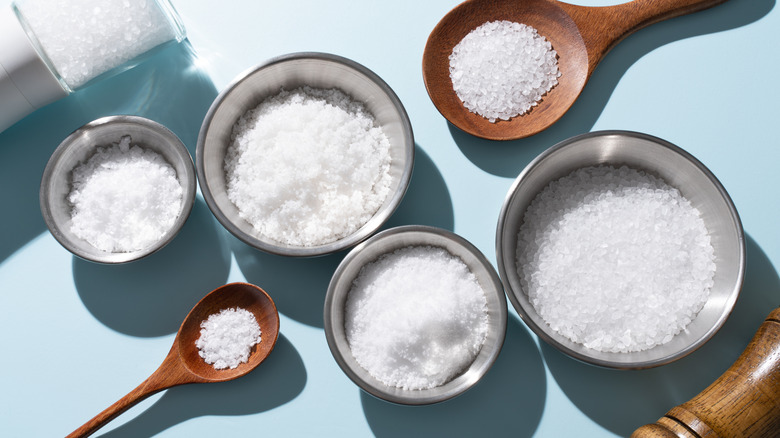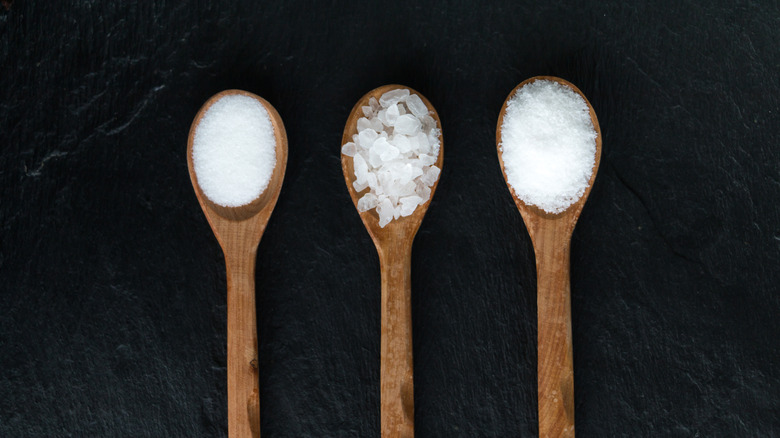Here's What Makes Kosher Salt Different From Sea Salt (And The Right Way To Use Both)
Without salt, food would taste dull and lifeless. After all, just a pinch enhances food and brings out pronounced flavors. Since there are different varieties (we're talking at least 16 types of salt available), some might want guidance on which to choose. Expert chef Richard Sandoval, a global pioneer in creating fine Latin cuisine, of Richard Sandoval Hospitality, talked to Food Republic to shed some insight on why professional chefs often lean on the differences between the two and why chefs often cook with kosher salt over sea salt.
Sandoval told us that "kosher salt is selected for its clean flavor and its coarse, flaky texture." This precision is part of the allure of kosher salt over sea salt. In fact, chef Sandoval informed us that the larger granule size "makes the salt easy to pinch and evenly distribute over food." Therefore, the salt "dissolves more slowly, allowing greater control over seasoning." Another main difference is that kosher salt typically has a uniform crystal size – whereas sea salt runs from extremely coarse and flaky to very fine.
Another key factor — sea salt (as the name designates) comes from seawater, so it features trace minerals (like iodine, magnesium, and calcium) that kosher doesn't have. Taste-wise, Kosher salt will enhance the flavor of dish itself while sea salt can impart different nuanced flavors due to its variable composition.
When to use each type of salt
Each salt works differently, providing unique attributes to each dish. Chef Richard Sandoval noted that kosher salt's coarse texture makes it "ideal for creating a light crust when seasoning proteins before cooking." This is, hands down, why kosher salt is the end-all, be-all of perfect steaks: It gives you that delicious golden crust. However, kosher salt's consistent size means it's also perfect for brining proteins, adding to sauces, and blanching veggies because it efficiently distributes into your dishes.
The size differences in sea salt make it the ideal choice for topping and finishing dishes. Not only does it work best at the end of cooking, but if you're drinking salt water, you should use sea salt — all thanks to those trace minerals. Sea salt also comes in different varieties (think pink salt, which is mild yet smooth and earthy; black, which is slightly smoky and a little eggy; and Maldon, which is clean tasting with a pyramid shape that is perfectly crunchy).
Use pink or white sea salt interchangeably on sliced fresh tomatoes for a burst of mellow, salty, fresh flavor. Try out black sea salt on vegan and Asian cuisine for a sulfurous flavor. Maldon is ideal for finishing anything from pizza to fudgy macadamia nut and peanut butter brownies for a salty yet crunchy boost.


